The air conditioner's proper function will always depend on how you handle and care for every component. However, you might wonder if the condensate can go into a sanitary sewer when maintaining the drain. We have conducted thorough research about whether or not you can do such a thing.
Yes, you can drain your air conditioner condensate to a sanitary sewer. However, you should know that it is unsafe to do so if you don't install it correctly and use the required device. Installing a P-trap on the condensate line would greatly help to mitigate odor and potentially harmful gases from entering the home.
Knowing the purpose of an AC condensate line is a must. You should also keep in mind that keeping it clean and free from filthy odors is highly necessary to have clear and healthy indoor air. Please keep reading to know why you should add a P-trap on your condensate when draining it into a sanitary sewer.
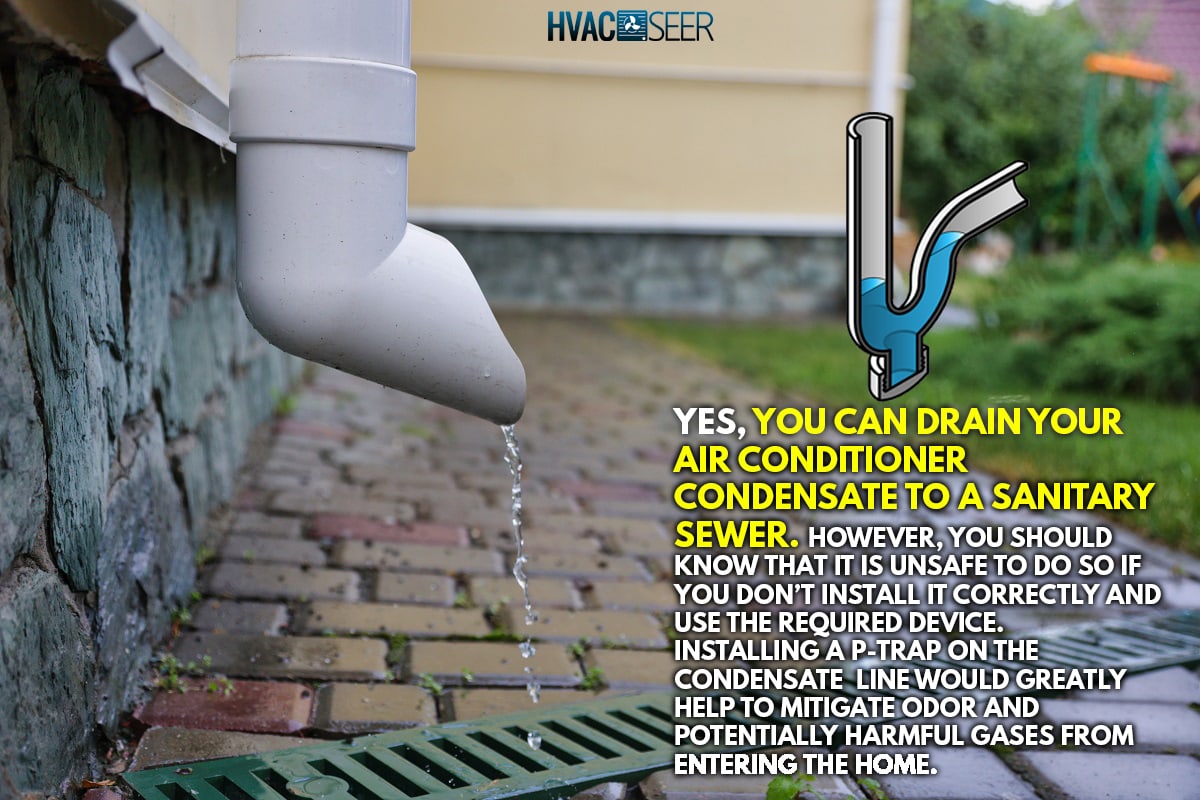
P-trap Importance For A Condensate Line Draining To A Sanitary Sewer
As mentioned, draining your condensate to a sanitary sewer is possible. However, letting the drain pipe flow directly into the sewer is never a good idea. If you let the sanitary sewer and condensate line have direct contact, the sewer air enters the condensate line, reaching the entire air conditioning system.
Can you imagine the disgusting odor your air conditioner will blow when this happens? Not only will it produce an awful smell, but it can also negatively affect your health and the unit itself. Remember that your health should be of utmost importance.
But you don't have to worry anymore since plumbers highly suggest using P-trap to stop it from happening. Its primary function is to block the entry of rotten and harmful gasses into a house. And in today's plumbing systems, they are crucial to use.
P-trap Helps Prevent Harmful Gasses From Entering The Condensate Line
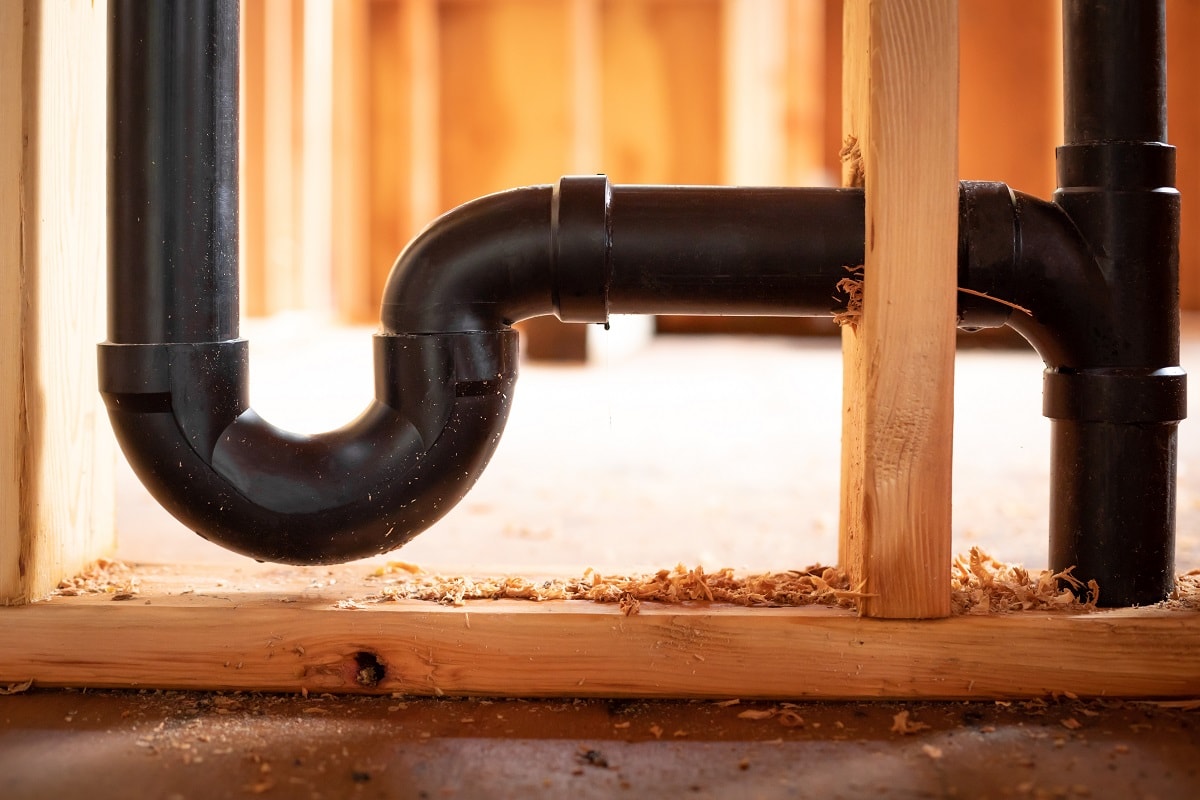
The P-trap corrects the pressure difference within the system. To accomplish this, it blocks the condensate line's ability to draw in air.
If you can notice, a P-trap contains a downward and upward pipe. Once your condensate drain releases water, it will reach the downwards pipe and rely upon its forward motion to ascend the upward tube. Since the upward tube is shorter, the inverse cannot occur.
Thus, the U-shaped space between the downward and upward pipes has a constant liquid supply. And when the condensate line releases new water, it will push out the previous steady water.
Know that the water in the U-shaped space is what prevents and traps the gasses and filthy odors from going back to your condensate line and air conditioning system.
How To Install A P-trap In A Condensate Line
Installing a P-trap to connect your condensate line to the sanitary sewer correctly is an easy task. However, after reading this section, if you find it a bit hassle, remember that you can always employ the help of an expert.
Before anything else, it would be best to prepare the following tools and equipment you will need to make the job more manageable to accomplish.
- rags
- hacksaw
- bucket
- PVC cleaner
- PVC primer
- PVC glue
- plier
- elbow pipe fittings
- pipe tee
1. Turning Off The Air Conditioner
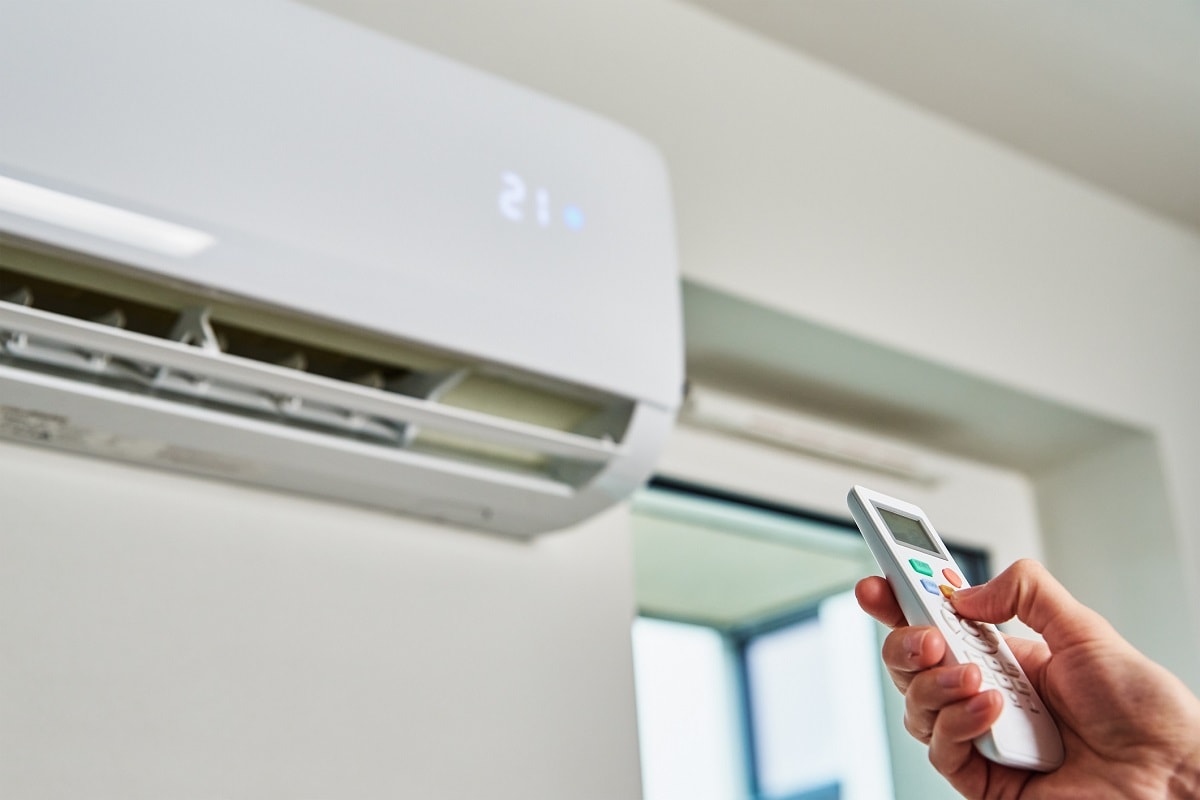
Before performing any step, you should switch off your air conditioning system first. You can do it on the thermometer and the circuit breaker to ensure it is entirely out. This step is to avoid any accidents from happening.
2. Cutting The Condensate Pipe
Prepare the rags and bucket for this step because you will need to keep the area clean while you do the job. Place the bucket and rag underneath the pipe as you cut it into two because it might still contain excess water. Drain the water thoroughly after cutting.
3. Constructing The U-shaped Pipe
In this step, you will manually create a U-shaped pipe. Get four pieces of elbow pipe fittings, but first, you must clean them using PVC cleaner.
You will start by getting one elbow fitting and connecting the condensate and the downward pipes together using it. Adequately apply primer and glue.
Connect another elbow fitting to the downward pipe's free end. After that, cut another short pipe to put on the other opening of the elbow fitting.
Cut another pipe to make it the upward pipe, but ensure it is longer than the last pipe or the bottom pipe you cut. And similarly, join that bottom pipe to the upward pipe via the third elbow fitting.
Join the drainage and upward pipes together using the fourth elbow. Lastly, ensure that you adequately coat all the joints with primer and glue.
Click here to check out this elbow pipe fitting on Amazon.
4. Installing The Ventilation Pipe
Cut the sewer pipe. And in this step, you will need to reverse the pipe T-fitting.
To vent air from bubbles, you must point the pipe upwards. Now, attach one end of the pipe tee to the shorter pipe of the P-trap you made, then place another short pipe into the other hole.
One advantage of PVC pipes is that you may quickly seal them off once you discover a leak.
How To Keep Your Condensate Line Clean And Free From Bateria
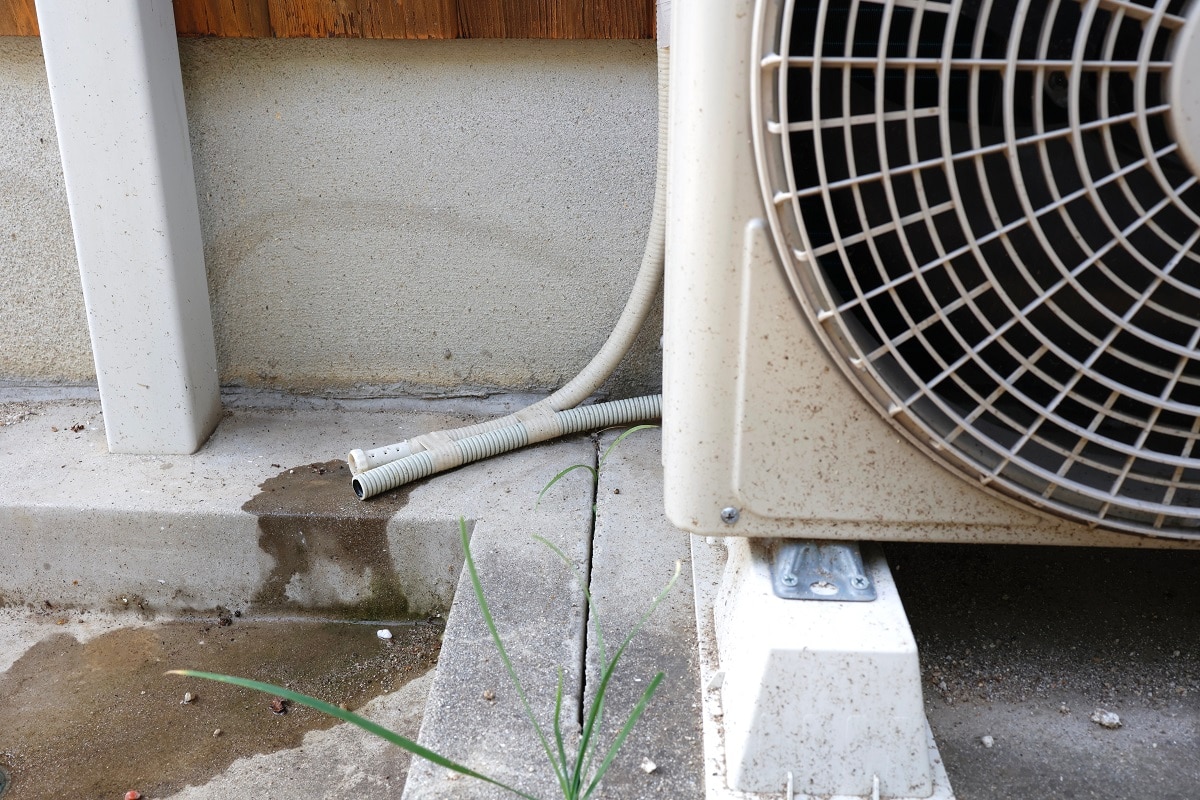
Since you plan to drain the condensate directly into the sanitary sewer, keeping it clean and free from dirt and bacteria would be best, especially since blockage is common in this plumbing setup.
Do this cleaning method as necessary to avoid harming your and your family's health from using the air conditioner. Furthermore, cleaning the condensate line will also help the air conditioner to be in its best working condition.
Below are the simple steps to clean the condensate line. But before anything else, please prepare the following:
- funnel
- a cup of vinegar
- rag
- bucket of water
1. Turn Off The Air Conditioner
As always, you should switch off the air conditioner first before you do any cleaning steps. Please turn it off at the thermostat and the circuit breaker to prevent any accident from occurring and damaging your air conditioning system.
2. Look For The Location Of The Condensate Drain
Go to the outdoor air conditioner and look for the condensate drain. But there are times when you can locate it in the same area where the furnace is. It is a PVC pipe that contains a cap.
3. Detach The Cap From The Condensate Pipe
Manually removing the cap is all you need for this step. It is a must since this is where you will start the cleaning process.
4. Check For Dirt And Debris Inside The Pipe
This step may seem complicated, but all you need to do is to use a flashlight and point it to the tube. If the light passes to the other end of the tube, you'll know it doesn't have clogging. However, even if there's no blockage, you should still clean it.
5. Clean The Reachable Areas Of The Pipe
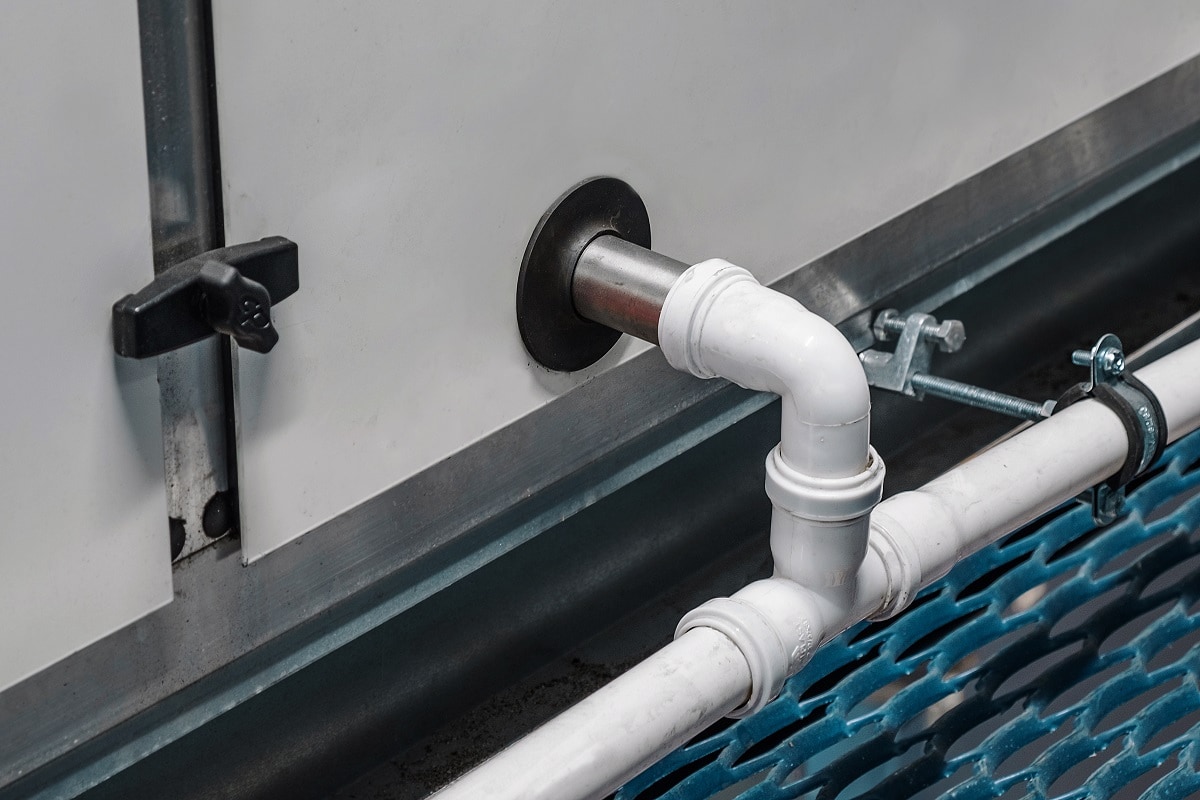
Get the rag and try to clean the reachable areas of the tube. You might as well clean the pipe's exterior if it is dirty, too.
6. Clean With Water And Vinegar
For this step, it would be best to use a funnel to make water and vinegar easier to pour.
People usually pour the vinegar directly into the pipe. However, it would be best to run a clean bucket of water first and let it drain freely. It is highly advisable if you wish to double cleanse your condensate line.
After you finish pouring the water, pour the cleaning vinegar next. Using vinegar is excellent since it has antimicrobial properties, which can disinfect the bacteria produced by the sanitary sewer and the condensate water hanging around inside the pipe.
Allow the vinegar to sit for a few minutes to an hour to let its job done.
Click here to check out this cleaning vinegar on Amazon.
7. Put The Cap Back To The Condensate Drain
After letting the vinegar sit for a few minutes, you must put the cap back on. Turn the air conditioner on at the thermostat and circuit breaker. And that's it! You can use your air conditioner again with a freshly cleaned condensate line.
Please remember that this regular cleaning process is the one you need to keep a healthy and clean condensate line. It is pretty easy, so it would be great not to ignore this maintenance.
It's A Wrap!
Now that you know how, draining a condensate line to a sanitary sewer is possible. But since we are talking about a sanitary sewer here, please keep in mind that you should not take it lightly, and you need to follow the guidelines we have provided above to keep your health at best.
We hope you find this post helpful to your concerns. If you wish to read further, you can check these posts out!
Where To Run The AC Condensate Drain Line


